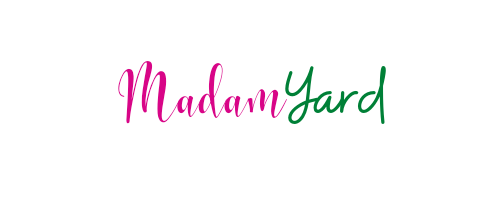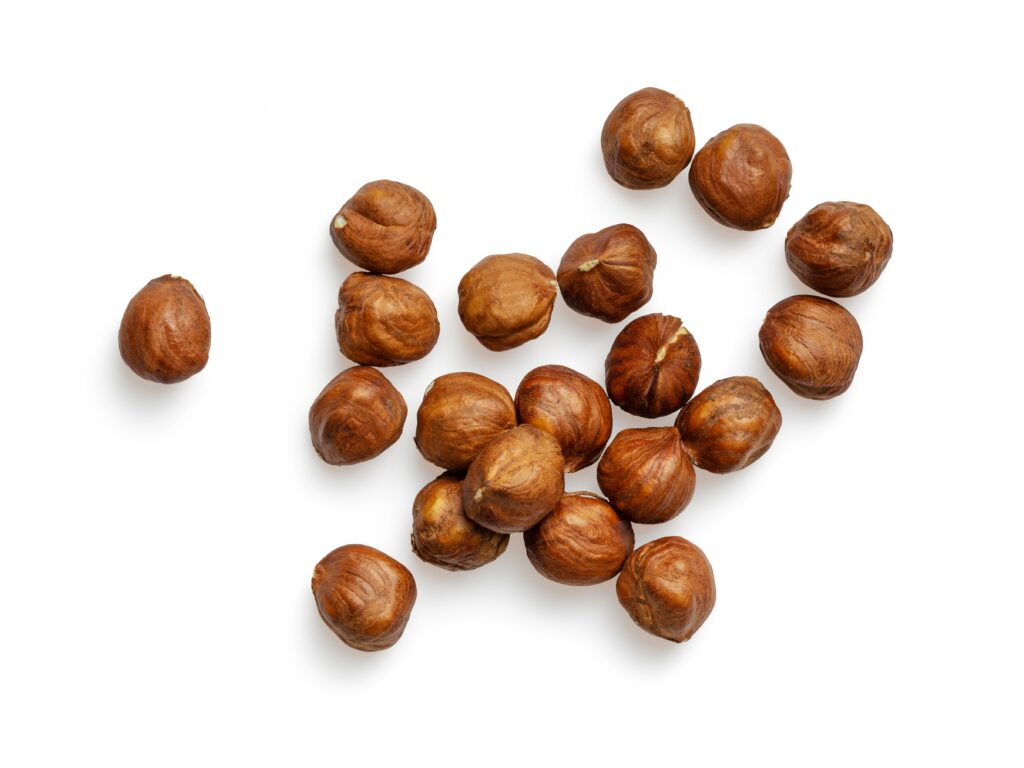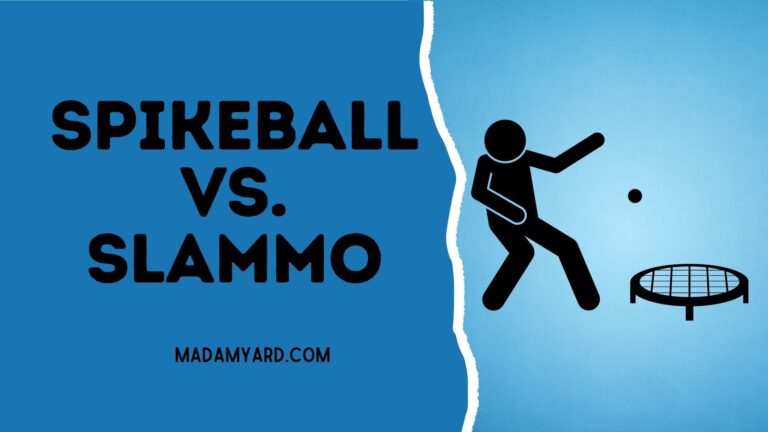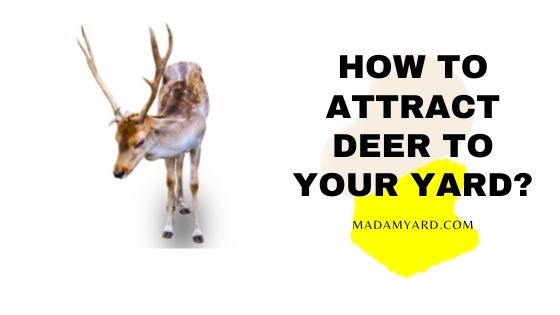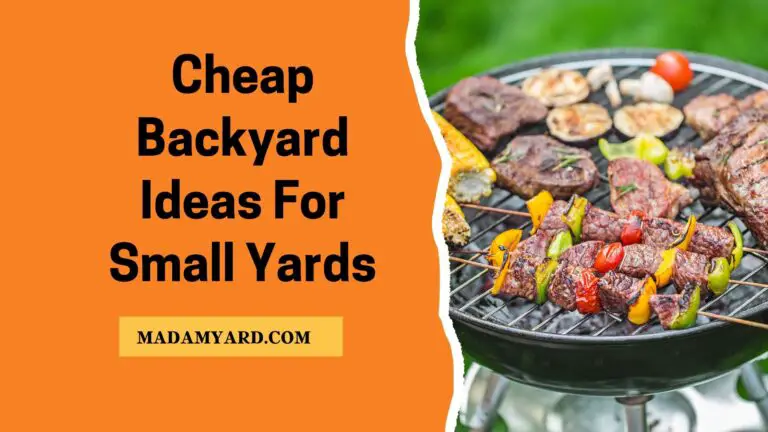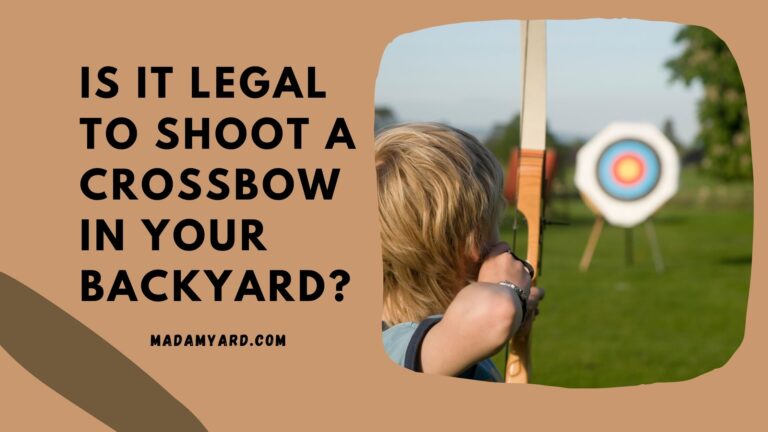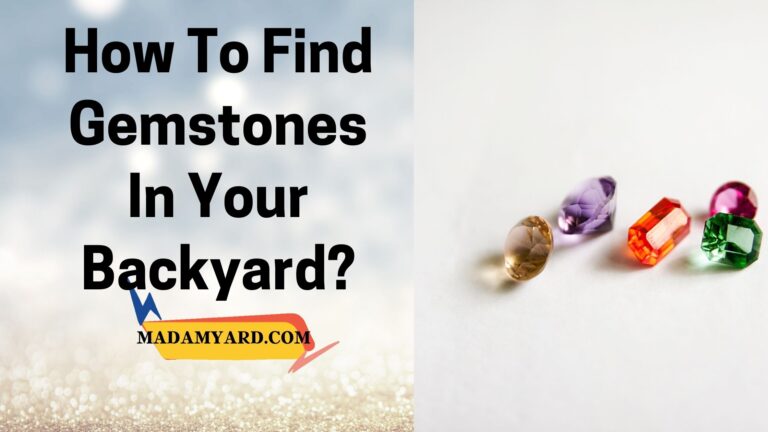What To Feed Deer In Backyard?
Deer roaming around can give your home a grand feeling. But, if they’re hungry, they could quickly devour all your garden and vegetable plants. Eventually, they can become an issue. So, it’s good if you can feed them some food. But, what to feed deer in backyard?
Many people would like to get rid of deer, but it’s great to provide them with food, particularly during the colder months of the year, when the food supply is low.
Deer are wild animals and must be treated as such. It is important to know that deer can be prone to chronic wasting, and deer living on your property could turn something cute into something unpleasant.
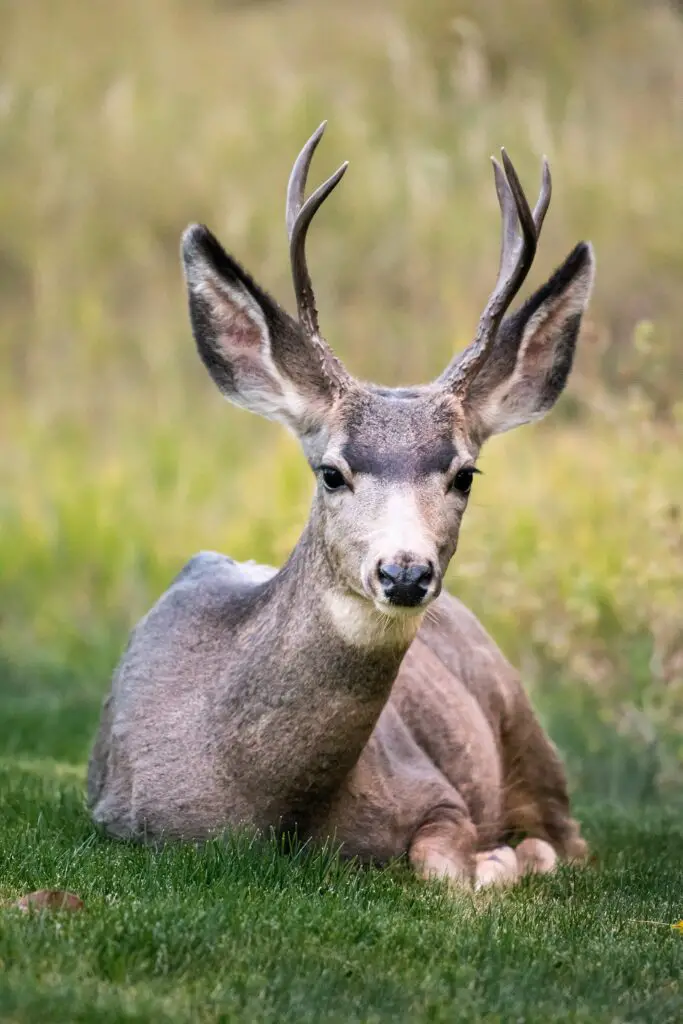
Infected animals can pass the disease via urine, feces, blood, saliva, and urine; however, it can be caused by contamination or water sources. You must ensure that the food you feed deer doesn’t contribute to this, and eating deep could be more complex than you imagine.
Here, you can find out more about the food deer consume.
Should I Feed Deer In My Backyard?
Many deer feeders claim it’s OK to feed deer in the backyard. Even if you can provide deer-like deer feeders, commonly utilized, you may get different results.
Deer fed may suffer from predators, famine, diseases, and other ailments. More giant deer may also strike at smaller deer when they are at a feeder when food for deer is not plentiful.
It’s more of a cover, not forage, which is the essential element for survival. To avoid severe snow, strong winds, and extreme cold, it is in this area that deer look for softwood covers.
The presence of deer in your yard during these times may have adverse impacts on the population of deer. When you lure deer to your feeding areas and feed sites, you will see many animals.
This density can be seen:
- Attracts predators, such as coyotes and domestic dogs.
- Infects populations of deer.
- Incites aggression, which eats up energy reserves and could result in injury or death.
- Reserves of fat will decrease when deer travel between feed areas.
- Food access is denied for subordinate deer, and there is a lot lesser food available for fawns when more giant deer are in charge.
What Is Deer Favorite Food?
When you think about the foods that deer consume, they love nuts and fruits, and it could be the types of fruit plants that draw deer all through the season. Foods that deer eat naturally when they come across them include acorns, beechnuts, pecans, and hickory nuts.
For fruit, they prefer blackberries and blueberries, and however, nothing can beat apples as the most popular food that draws deer. The trees and shrubs, as well as the other varieties of plants in your yard, can be picked all year round.
When a new food is introduced, animals will continue to enter the backyard and turn into backyard pests.
What Can I Feed Wild Deer?
Investigate the various supplementary food items and plants you can cultivate in your garden during the winter months. The plants should be attractive enough to attract deer to the food source. It is better to locate sources of food that have been confirmed to be nutritious and delicious for deer.
The root bulb and corn are generally considered excellent plants to feed deer. However, it is advised that deer consume cereal grains, such as oatmeal, instead of eating a diet consisting of corn. Corn is not a good source of protein, but deer can eat it when hungry.

Corn and processed deer food have a lower content of starch that makes it hard for a deer’s stomach to take in the corn multiple times from the feeder for deer. It typically one of the main ingredient found in large amounts of deer food pellets that are manufactured.
Corn is a complex crop because deer herds live in areas where it is grown and is available as a food source throughout the year as a component of deer’s diet. In this case, deer can consume this food source without harm.
The stomach of deer is adapted and produces acids that are needed for breaking down the amount of starch.
To feed deer in your yard, you should avoid using natural corn. There is another option in feeding deer with corn, and the deer-corn is designed with an abundance of fat and carbohydrate.
Furthermore, it’s easy to put mineral blocks scattered around so that the deer have access to nutrients and minerals they require away from deer’s food sources.
What Should You Not Feed Deer?
The bread, just like corn, has elements that are high in starch for deer to be able to digest easily. The high levels of starch in barley and wheat can result in deer suffering from indigestion that can last to death, based on the much they eat.
The act of feeding deer bread seems innocent enough; however, it’s harmful to all animals. It is not advisable to feed barley, wheat, or corn to animals that live in your backyard most of the time.
The issue is that deer are not intelligent enough to avoid eating things that can harm their health. The problem is that their stomachs aren’t equipped to break down excessive amounts of starch.
If they consume excessive amounts of something sweet, it may end their lives. When it is winter, and the trees are not in bloom and ground frozen, there’s likely to be nothing other than food available, and the deer may mistakenly consume the starchy foods.
Some other foods are not suitable for deer, like alfalfa, hay, and other grasses. However, with caution and limitations, you can still feed deer with it.
Deer starving or eating fewer rations since the trees are not providing much cannot digest the hay. The reason is that their stomachs expand considerably.
Scraps are usually left to be used because they are an unwise choice. The deer population might be substantial in many places, but some are smaller in certain areas.
How To Feed Deer In Backyard?
Feeding deer in the backyard is a great way to interact with them and a highly effective way to protect them from predators. Manufacturer specially design deer feeder to offer homeowners the best experience of feeding deer.

There are many different feeders for deer currently available on the market. Deer pellet formulae are designed to be more nutritious than regular deer food, but some people prefer to use oat for deer feed because it’s easier on their stomachs.

The introduction should be about how deer feeders can help deer stay healthy and live better lives by providing them with the right nutrients.
What Is The Best Way To Attract Deer to Your Backyard?
1. Create a water source for deer in your backyard
One of the best ways to attract deer is to create a water source. Deer need to consume enough water per day, so make sure they always have access to it.
Keep in mind that if you live in an area where water is scarce, it may be difficult for them to find another source without your intervention. You can place the water far from your house to ensure that the deer is not scared.
2. Have a quiet and calm yard
Deer are notoriously skittish animals, and the slightest sound can cause them to flee. If you want to attract deer to your yard, you should take measures to ensure that it is as quiet and calm as possible.
Put up a fence or run some fencing along the ground, or plant some tall plants near your home to hide you from any visitors.
3. Do not install bright light near the yard
Deer are naturally inclined to avoid bright light. If you install bright lights near the yard, the deer will be more likely to stay away because they scare off the light.
Pros and Cons of Feed Deer In Backyard
Let’s take a look at the pros first:
Pros of Feed Deer In Backyard
The most obvious reason people feed deer is to help them survive during the winter months when food is scarce. Even in areas with plenty of natural food available, feeding deer will help them get through the winter when they need it most.
1. Help Deer Survive During The Winter
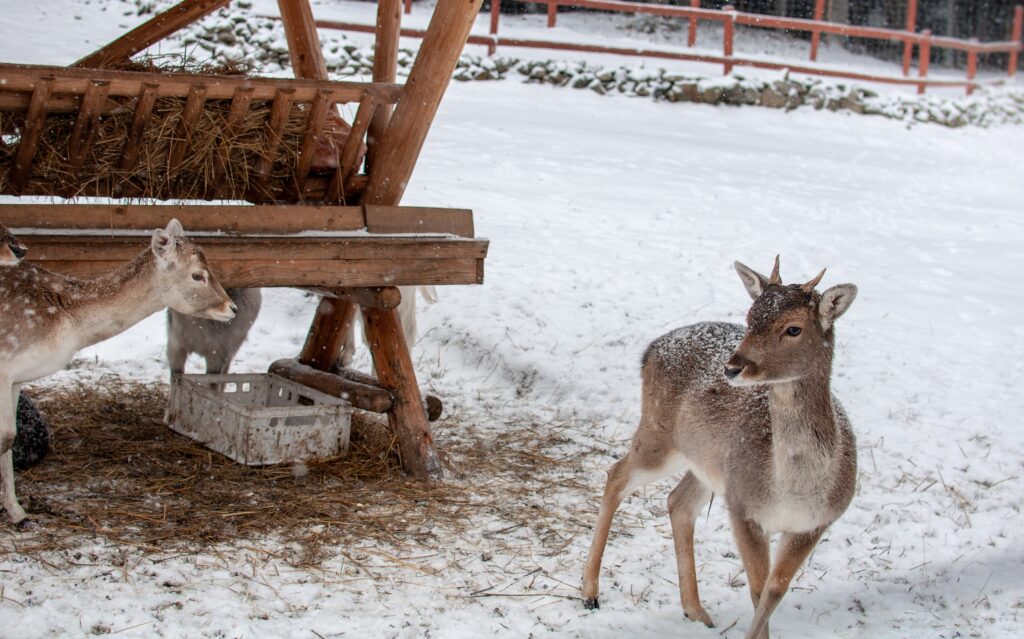
They have less energy during the cold months, and their metabolism slows down, so they need more calories to keep warm.
By feeding them other food during these times, you will help them survive and stay healthy.
2. Make Fawns Grow Quickly
Feeding deer during the spring and summer months can also be beneficial because it provides supplemental nutrition for fawns to grow quickly. This helps ensure that they have what they need to stay healthy and strong for their babies when it comes. Fawns also benefit from supplemental feeding during the first few months of their lives.
3. Help Doe Fawn Produce Milk
If you have a doe fawn, you will want to make sure she eats plenty of food to produce milk for her fawn. Feeding her extra during this time will make this process much easier on both of them.
4. Help Deer Get Enough Food
Feeding deer will also help them get through the long summer days when there is not much natural food available for them to eat.
Cons of Feed Deer In Backyard
While feeding deer is a good way to help them survive and grow strong, it can also negatively affect the deer population. These include:
1. It can increase the population of deer in your area.
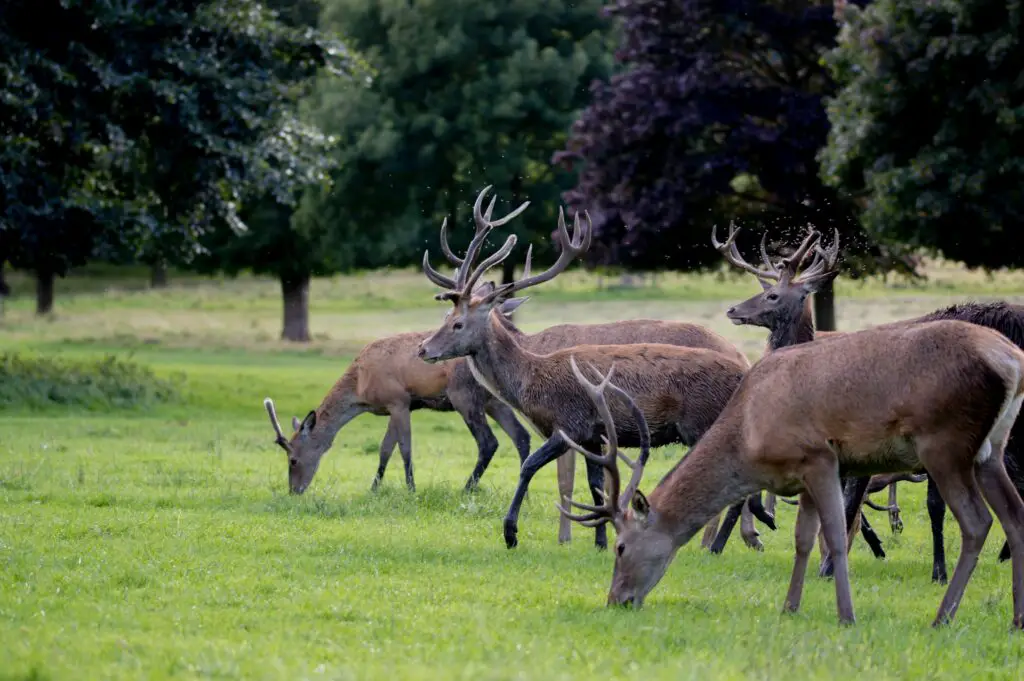
When you feed deer, they will come back to the same area again and again so that they can get more free food from you. This will draw more deer into your neighborhood, which could cause problems for local farmers or homeowners. If you have too many deer in your neighborhood, then they might cause damage to your property or even hurt someone by accident.
2. It can make them dependent on humans for food.
While it’s great that you are helping the deer in your area, this could lead to a problem if you stop feeding them at some point in the future. If they become dependent on humans for their food instead of finding it naturally in their environment, they may not survive without it once you stop feeding them.
3. It can make them lose their natural fear of humans.
Feeding deer near your home can also negatively affect you, including making the deer lose their fear of humans and become more aggressive towards them.
When deer become too comfortable around people, they could accidentally hurt someone or even attack if they feel threatened. This could cause serious injury to a person, especially if a doe is protecting her fawns or if a buck is defending his territory from an intruder.
4. It can cause the deer to become sick from eating human food.
Another problem with feeding deer is that it can make them sick from eating unhealthy human food and junk food instead of the natural plants and grasses they are supposed to eat in their natural environment.
If you decide to feed deer near your home, you should only give them healthy snacks that aren’t processed or full of sugar and preservatives like soda cans and candy bars.
5. Deer can damage your property
If you have deer on your property and feed them, they could cause serious damage to your yard and house. They could break down any fences in their way, dig holes, and eat plants growing in your garden.
This can make it very difficult for you to maintain your yard and landscaping without spending much money or time doing it.
6. Deer will lose their natural fear of predators
Another thing that feeding deer near your home can do is make them lose their natural fear of predators like coyotes, bobcats, and other animals who prey on deer. If the deer become too comfortable around people, then they could get hurt or killed by predators because they don’t see them as a threat anymore.
This can also lead to more coyotes moving into the area because there are more deer to prey on near homes where people are feeding them.
Final Remark
Now, you know what to feed deer in the backyard, but you must provide them with healthy and tasty food. Many well-intentioned folks put out food for local deer herds during the winter when their natural food sources are scarce, only to discover that the wrong kind of food can be more destructive than no food at all.
Obviously, deer are complex animals. Making sure you provide the right food for deer is important if you intend on feeding them.
